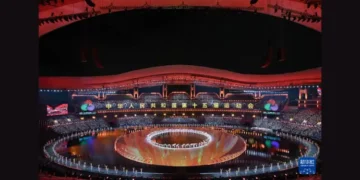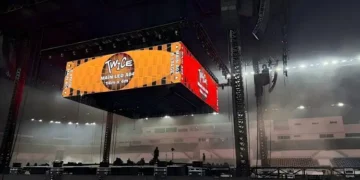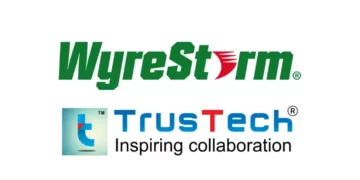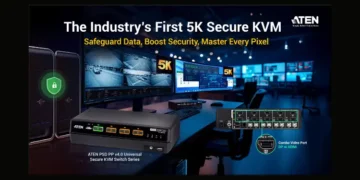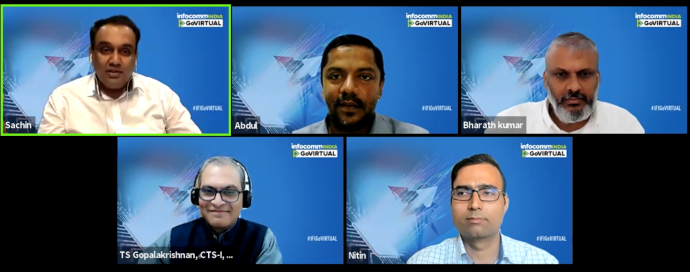By Ram Bhavanashi
Yes. The 2020 edition of Indian AV industry’s one and only premier tradeshow, when it opened on 18 November – on what is reckoned to be the world’s first virtual tradeshow platform that combined AI-powered business matchings and live product demos with virtual showcases – apparently delivered a powerfully ‘new genre of event experience.’ In that it may have also evolved a veritable alternative to the in-person show for the times to come, with a lot more anticipations.
SI Asia, which was also the first media entity to report spot on the ‘eX factor’ event, presents here the holistic account and perspectives for the future:
Explore! Experiment! Experience! Excitement! & Excellence
That probably sums up the InfoComm India 2020 GoVIRTUAL event in a nutshell.
On its eighth outing on the trot, and the first big professional tradeshow in India on a virtual platform, InfoComm India 2020 GoVIRTUAL, when it kicked off on 18 November, 2020, was taken like a ‘verification of its effectiveness.’ With the challenges of COVID-19 pandemic, and the generic scepticism given, it was a sort of litmus test- more for the exploit than for the experience, which itself was a big experiment.
With a resolute effort to create as close replica to an in-person event as possible, InfoCommAsia Pte Ltd – the promoters of the event – have apparently walked the extra mile in technology adoption and explored the possibilities. In what may be said like creating opportunity in the face of adversity, the event appeared to have succeeded in its exploit.
The very formulation of the format itself stood out in that:
• It explored the AI (artificial intelligence) to perhaps one of the best expressions- its AI-powered algorithm worked intuitively to match exhibitors with relevant visitors, and vice versa. The algorithm was developed to track the user’s behaviour, interactions and searches performed on the platform; learn; and continuously refine its accuracy to provide highly-relevant business matches. The perfection of the creation enabled the exhibitors to browse the profiles of sales leads they should be reaching out to while visitors could connect with the shortlisted technology solution providers.
• It created real-time, live product demos that allowed the exhibiting company reps to explain their solutions to the viewers as they would have done in an in-person interaction. The integrated audio and video chat functions enabled both presenters and audience to engage in real-time conversations.
• It had virtual showcases that sort of mimicked actual exploration experience on the show floor, allowing visitors to interact with exhibitors and see their technologies up close and in action. Again, the integrated audio, video and chat functions here let visitors interact with exhibitors, just like visiting an exhibitor’s booth in person.
• Keeping up the practice of on-ground technical sessions, the event had a series of Webinars that debated the topics of the time: discussions on a post-pandemic future, India’s smart urbanization journey, cybersecurity, digitalization of healthcare and education, and more.
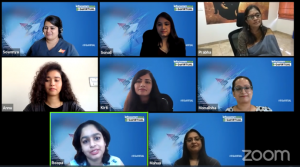
The platform, therefore, did bring to place a range of innovative yet seemingly easy-to-use features that appeared to help deepen the business experience for both exhibitors and visitors.
Overall, the event visibly allowed both exhibitors and visitors to ensure business continuity, irrespective of their physical distance.
“The unique and ground-breaking GoVIRTUAL platform was a culmination of over five months of intense development,” noted Richard Tan, Executive Director, InfoCommAsia. Talking to SI Asia during the event, he said, “since this is the first such platform with live booths, live demos and AI capability being launched in the market for the first time, we could not be sure it will be effective and work well (but),” he said, “Today is verification of its effectiveness; we cannot be (more) happier with the outcome.”
The COVID-19 pandemic has caused major disruption to businesses around the world; it hasn’t spared InfoComm India either, and we had to make the difficult decision of cancelling the in-person show earlier this year, Richard noted. “Yet in every crisis lies an opportunity. Knowing fully well the value that InfoComm India has brought to technology innovators and industry End-Users over the years, we quickly pivoted and committed to delivering a digital event,” he said. “As a proponent of technology, InfoCommAsia walked the talk, adopting cutting-edge innovations such as artificial intelligence and live streaming to achieve a first-of-its-kind event.”
Generically said, the InfoComm India 2020 GoVIRTUAL platform did create a new genre of excitement, and experience, per se. Most exhibitors were found ‘occupied’ for much of the event time, and beyond with visitors, some of the booths were practically ‘houseful,’ and a couple of events were a sort of ‘over-subscribed.’
“The Infocomm India virtual event provided another dimension to meet people in the industry,” said Kirti Shetti, Director-Operations at Kramer India. “We had good number of people visiting the booth, attending Kramer hosted Webinars and Demo rooms.”
Kramer India Managing Director Bharath Kumar commended the organizers ‘for pulling off a spectacular InfoComm India GoVirtual.’ “It was very well organized and managed; the event turned out exceptionally well and surpassed the expectations of many,” he noted.
Felt Naveen Sridhara, Director-Sales & Marketing-SAARC at beyerdynamic: “InfoComm India GoVIRTUAL, as a technology platform, is a great initiative in that it connected new people in the industry in a new format. We had found new End Users and new industry professionals and that’s a great sign and dimension.”
According to him, while the platform is a wonderful setting in the given circumstances, as it enabled exhibitors as well as visitors to reach out their right targets, Indian industry perhaps needed more of such exposures to get used and ahead with it.
“It’s been a wonderful experience for us; we were able to connect with lot of new customers, consultants and partners,” noted Gagan Verma, Executive Director Crestron Electronics, India & SAARC. “The platform, in fact, turned out to be far better than what we expected; it was very effective in showcasing our solutions,” he said. “It was particularly effective in that it ensured that we maintained a continuity from what we did at last year’s InfoComm India show, and what we would do at next year’s show.”
According to him, as many as nearly 1500 people had visited Crestron booth over three days, which was a sort of ‘incredible.’
For Logitech India, one of the busiest exhibitors, and who built an exclusive experience zone and a demo centre for the show, it’s been a greatly successful show. They were able to demo their products efficiently, and address their visitors’ queries effectively. “We were able to interact with a lot of people, and have quite a few enquiries,” Varun Nair, Logitech India’s Product Head-B2B segment, said. “I think we achieved our objective.”
“I enjoyed visiting InfoComm India GoVIRTUAL. It was a good initiative to have during the COVID-19 pandemic as it allowed me to continue seeking new technologies and get in touch with solution providers,” said Akash Nalawade, Sales Executive, DIKIBI Technologies Pvt Ltd.
Numbers Did Prove it Good
Set against a very challenging environment, the event having as many as 92 exhibitors with as many as 183 product live demos – including some incredibly new launches – and 28 webinars attracting as many as nearly 3500 attendees does go to prove a point or two.
Kramer Electronics delivered live product demos on its recently-unveiled VIA GO2 for collaborative spaces; and new-to-India Corona Tag, which is a social-distancing monitoring device.
Delta Displays, another Platinum Partner highlighted its product demos with its 3D Fine Pitch LED Displays – a new series of fine pitch LED display with active 3D capabilities for indoor applications. It provides a flicker-free 3D experience which user can experience wearing active 3D glasses in a 1.2 mm pixel pitch.
The new fine pitch series is perfect for applications requiring wide viewing angles and superior close-up visual performance. With a small pixel pitch, high resolution and 3D support, the Fine-pitch series is designed for users who demand the best in 3D visualization capabilities in industries including museums, theme parks, and more.
Crestron, another Platinum Partner, had wide basket of applications that are highlighted by is newly released Flex Series solutions for every space, and 70 Series Touch Screens that actually enable touchless control automation by means of Crestron One mobile app.
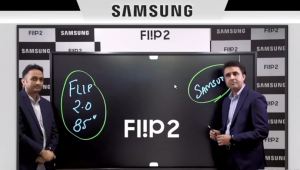
Revving up the experiential was Samsung, who have virtually stole the thunder of Day-2 event in that it launched the high-end version of its revolutionary Flip 2.0 interactive panel that fascinated the world at ISE 2020. While the ISE event was treated with 55-inch, and 65-inch panels, InfoComm India 2020 GoVIRTUAL played the global launch platform for the 85-inch panel, that packaged an enhanced experience of visibility and form factor with the existing features from the ISE launch.
The launch event was over-subscribed with as many as 300 viewers from across the industry spectrum watching the event. Puneet Sethi, VP-Samsung Enterprise Business, and Vikas Sanwal-General Manager, Samsung Enterprise Business unveiled the product while Sourav Chakraborty, Deputy General Manager detailed the features of the solution to the understandably awed audiences.
Other interesting products on show included mainly Genelec’s premium Smart IP Loudspeakers that were launched at the ISE 2020 but haven’t hit the markets in Asia and India on the intended scale, due to the impact of the COVID-19 pandemic.
“Thanks to the pandemic, we couldn’t move as dynamically as we would have loved, especially since these products are meant for speciality venues with unique applications, and we took this platform to be able to reach out to the discerning user sections,” said Arun Kumar, Genelec’s Regional Sales Manager for Asia & Middle East.
Keeping in with the market sentiment and requirement, Screenage Electronics put on a demo of its latest Hand Sanitizing Dispenser along with its other ranges of signage and screen solutions for indoor and outdoor applications.
IBASE Technology demoed its range of digital signage media players aimed at diverse vertical markets such as transport, finance, retail and hospitality segments.
Considering the current IoT trends, and telecom winds of 5G, a product of interest on demo was the ACT Power (Taiwan)’s Smart 5G IoT Gateway ECN-T5R terminal that is said to provide LTE/5G communication for M2M applications.
A new, perhaps, pleasing feature of the InfoComm India 2020 GoVIRTUAL was its programme lacing with install case studies- with each day having two case studies. The companies explaining how those installs turned unique with their solutions made it all the more informative for attendees.
Hybrid – is the New Demand
While the technology platform InfoComm India 2020 created, and provisions offered excited most, it is now asking for more. Most exhibitors want a ‘hybrid event’ with a blend of both physical and virtual grounds for the coming events.
Says Chicco Hiranandani, Director-Marketing for Shure in SAARC: “The ability of the platform to filter by the type of attendee is very powerful; however, it is always great to meet in person. The energy is different.”
“While the virtual platform enables a connect between people, it cannot substitute the emotional connect of a personal touch,” observed Mrudul Jain, Business Head at Sennheiser Electronics India. “A blended platform would be the answer, enabling both the tech savvies as well as those needing the emotional connect.”
Interestingly, the demand for the hybrid event turned doubly vociferous and echoed across the industry spectra.
Maintains Varun Nair: “As it is, Logitech is one of the largest proponents of virtual meetings and events; even we say that this is the next best thing to being in an in-person event.” According to him, the magic of the physical InfoComm show – where not just the visitors, but the exhibitors too get to see what diverse range of solutions are on show – can never be replicated by a filtered virtual show.
“An In-Person event provides for not only face-to-face interaction, but also helps see what other OEMs and exhibitors are showing, besides enabling connect with old industry friends. A virtual event cannot capture all that. It is, therefore, a blend of the two that would be an excellent model,” he asserted. “So, going forward, the next InfoComm show should be a hybrid one with both in-person and virtual shows happening simultaneously so that people who cannot travel to the show can still participate in the event, and get the best out of it. It helps even the exhibitors to tap into untapped areas.”
So was the endorsement from Gagan Verma. “Everyone cannot travel to a physical event, and not everyone can visit the show on all the three days. So, while the physical show has its own advantages and pull, it does have quite a few connects missing from people being unable to travel but are potential customers. A virtual show helps connect with those people. Perhaps, that’s the best way InfoComm event can value add to the industry growth.”
InfoCommAsia Considers GoVIRUTAL and Hybrid
As if it had anticipated the industry expectation, and realized the power of the virtual platform, InfoCommAsia is actively considering to adopt this powerful platform for all of its upcoming marquee shows in 2021: InfoComm China slated for July, InfoComm India in September and InfoComm Southeast Asia in October. Each show will be a hybrid of in-person and virtual platforms. Additionally, InfoCommAsia will host regular one-day preview events on GoVIRTUAL leading up to the main hybrid event, with each one focusing on a different vertical and geographic markets as well as the respective end-users.
InfoComm India GoVIRTUAL 2021
The next hybrid InfoComm India will take place 15 – 17 September 2021 at the Bombay Exhibition Center, Mumbai. Stay tuned for more information at: www.infocomm-india.com

